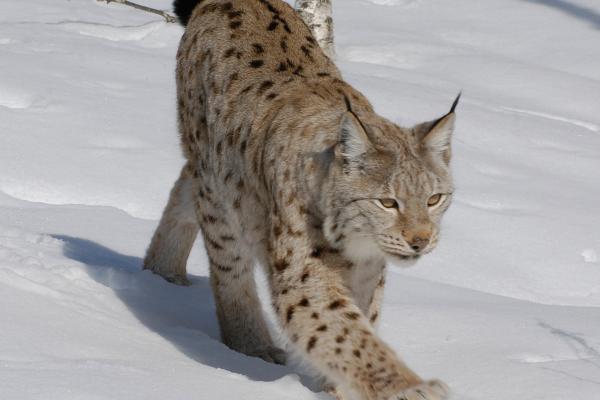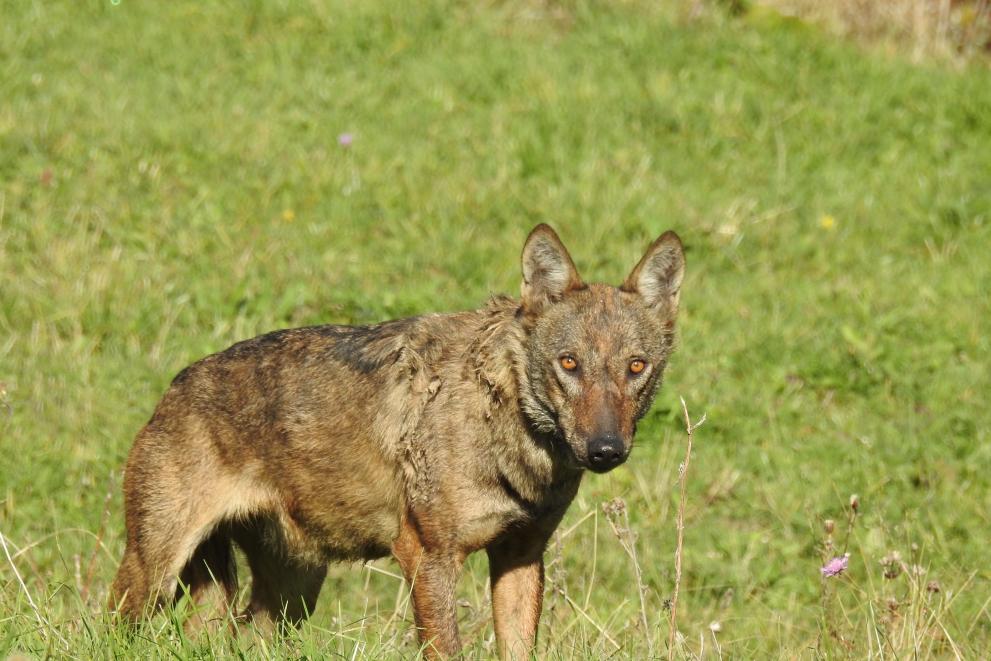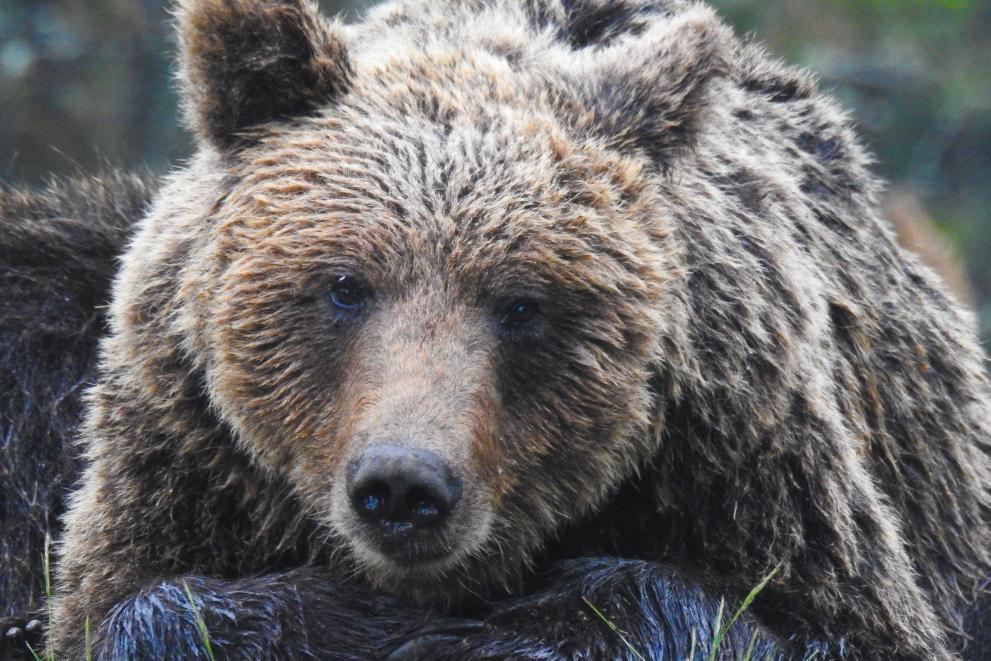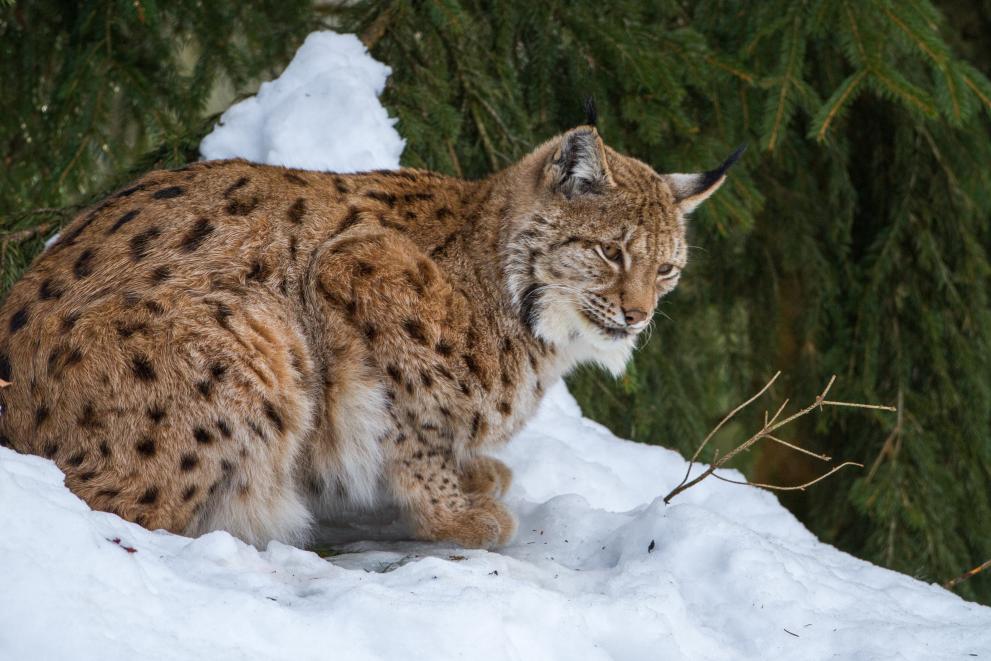Overview
The Commission has initiated a range of measures to conserve large carnivores in the EU. The recovery of large carnivores in the EU also contributes to the objectives of the European Green Deal’s EU biodiversity strategy for 2030. This is the EU’s plan to put biodiversity on the path to recovery by 2030. It contains specific commitments and actions to protect nature and reverse the degradation of ecosystems, building on existing nature laws.
In the EU
6 Large carnivore species are present in Europe: Brown bear (Ursus arctos), Wolf (Canis lupus), Eurasian lynx (Lynx lynx), the highly threatened Iberian lynx (Lynx pardina), Wolverine (Gulo gulo) and Golden jackal (Canis aureus).
All mainland EU countries host at least one large carnivore species.
Species Protection
To ensure the conservation of a wide range of rare, threatened or endemic animal and plant species, the Habitats Directive requires Member States to establish a system of strict protection, prohibiting namely deliberate killing, capture or disturbance of species in the wild, as well as the deterioration or destruction of their breeding sites or resting places. Under Article 16, the Habitats Directive allows for derogations to this system of strict protection, under certain conditions. Derogations should always be used as a last resort. Read this summary guidance document for more information.
Distribution of large carnivores
The ongoing recovery of many large carnivores’ in Europe is a recognised conservation success, made possible by protective legislation, more favourable public attitudes and habitat improvements.
Stakeholder cooperation
While the recovery of large carnivores can be viewed as a success, it has also resulted in the resurgence of conflicts with some stakeholders. This is mainly because large carnivores, in particular wolves, after an absence of decades (or longer) have returned to some parts of Europe, where the knowledge and the practices of living with them had been lost. This concerns, in particular (but not only) livestock predation in the areas where shepherding or other traditional systems to manage and protect livestock had been abandoned.
In response, and to support implementation of the Habitats Directive on the ground, the Commission has for many years been carrying out a range of measures to encourage and facilitate dialogue and cooperation between stakeholders and to promote best practices on coexistence. In this spirit, the European Commission supported the establishment of the EU Platform on Coexistence between People and Large Carnivores in 2014 and the Regional Platforms on People and Large Carnivores in 2018 to promote ways and find solutions to minimize conflicts between human interests and the presence of large carnivores. Latest findings are summarised in this toolkit.
In-depth analysis on the wolf in the EU and Commission’s proposal for Bern Convention
As committed to in its response to the European Parliament Resolution of 24 November 2022 on the protection of livestock farming and large carnivores in Europe, the Commission published on 20 December 2023 an in-depth analysis on the situation of the wolf in the EU.
The In-depth analysis on the situation of the wolf in the EU shows that the populations of the wolf have significantly increased in the last two decades. There are today more than 20,000 wolves in the EU with generally increasing populations and expanding ranges across all mainland EU Member States with breeding packs in 23 EU Member States. This is a conservation success, made possible by the protective legislation, more favourable public attitudes and habitat improvements. The continued expansion has in parallel led to increasing conflicts with human activities, notably concerning livestock damages caused by the wolf. Depredation has reached important levels, affecting more and more regions, both within EU Member States and non-EU Bern Contracting Parties.
In order to reflect this new situation, on 20 December 2023 the Commission tabled a proposal for a Council Decision to adapt the protection status of the wolf under the under the international Bern Convention on the Conservation of European Wildlife and Natural Habitats, to which the EU and its Member States are parties. Any future decision to lower the protection status of the wolf in the EU legislation will be subject to a decision taken by the Council on the Commission proposal presented on 20 December and, as a second step, the outcome of the relevant Standing Committee Meeting of the Bern Convention. Then the EU could decide on a possible targeted amendment of the EU Habitats Directive.
Data collection on wolves
The Commission started in April 2023 to collect data from expert groups and key stakeholders, as well as the data reported by national authorities under the existing EU and international legislation. On 4 September 2023, the Commission launched a new phase of the data collection, inviting by 22 September interested parties such as local communities, regional authorities and scientists to submit up-to-date verified scientific data on wolf populations, such as number of individuals and/or packs in a specified territory, and/or verified data on damage on livestock (number of predations on sheep, goats, cattle, horses, donkeys, semi-domestic reindeers and dogs) and on cases of bold wolves. The received data based on agreed national monitoring methodologies or other official procedures/methodologies were also transmitted to the relevant Member States for consultation before finalising the in-depth analysis.
A summary of the findings of the targeted data collection is included in the in-depth analysis. As regards the received submissions, please note that the European Commission is committed to protect your personal data and to respect your privacy. The Commission collects and further processes personal data pursuant to Regulation (EU) 2018/1725 of the European Parliament and of the Council of 23 October 2018 on the protection of natural persons with regard to the processing of personal data by the Union institutions, bodies, offices and agencies and on the free movement of such data (repealing Regulation (EC) No 45/2001). For more information on how your personal data in relation to this consultation was processed please consult the Specific Privacy Statement.
Tools
To support Member States and other stakeholders, the Commission issued Guidance on the strict protection of animal species in 2021 inter alia by offering information and advice on how to address conflicts between strictly protected species and human activities. A dedicated Annex on the wolf has been included in the guidance.
The EU also supports Member States in ensuring coexistence with large carnivores through the available financial instruments, such as LIFE, the European Agricultural Fund for Rural Development (EARDF) or the European Regional Development Fund Interreg instrument.
Since 1992 the LIFE programme funded more than 170 projects dealing with large carnivores. For more information visit the LIFE Public Database (insert "wolf", "brown bear", "lynx", "wolverine" in search bar) or find an overview of large carnivore-related LIFE projects here.
Documents & useful links
- The situation of the wolf (Canis lupus) in the EU: an in-depth analysis
- Commission proposes to change international status of wolves from ‘strictly protected’ to ‘protected’ based on new data on increased populations and impacts (Press release 20/12/2023)
- Questions and answers on changing the protection status of the wolf under the Bern Convention (Q&A)
- Proposal for a Council Decision for amendment of Appendix II and Appendix III of the Convention on the conservation of European wildlife and natural habitats (Bern Convention) with respect to the wolf (Canis lupus)
Further resources
- Habitats Directive: Guidance on protected species
- Letter Commissioners Sinkevicius and Wojciechowski to EU Environment and Agriculture Ministers on Guidance Document
- EU platform on coexistence between people & large carnivores
- EU platform poster
- LIFE and Human coexistence with large carnivores
- Coexisting with large carnivores: the challenge and the opportunity
- A Toolkit: Supporting establishment of regional / local platforms on large carnivores
Other resources
- Large Carnivore Initiative for Europe (IUCN /SSC specialist group)
- IUCN SSC Human-Wildlife Conflict & Coexistence Specialist Group
- Carnivore Damage Prevention News
- LCIE Guidelines for Population Level Management Plans for Large Carnivores
- IUCN SSC Guidelines on Human-Wildlife Conflict and Coexistence
- Technical report: Key actions for Large Carnivore populations in Europe
- Report: Problem bear behaviour in Europe
Subscribe here to the biannual newsletter of the EU Large Carnivore Platform
News

- News blog
Slovakia and Switzerland collaborated and combined scientific monitoring, genetic rescue efforts, and extensive public engagement to preserve lynx populations.
- 2 min read

- News blog
The immersive exhibition "through the eyes of a wolf" lets visitors experience the the perspective of a young wolf in dispersal in Italy.
- 3 min read

- News blog
The Status and Conservation of the Alpine Lynx Population (SCALP) was created in 1995 to survey the status of the lynx in the Alps, carry out monitoring activities in coordination between Alpine countries and close research gaps in the region.
- 2 min read




